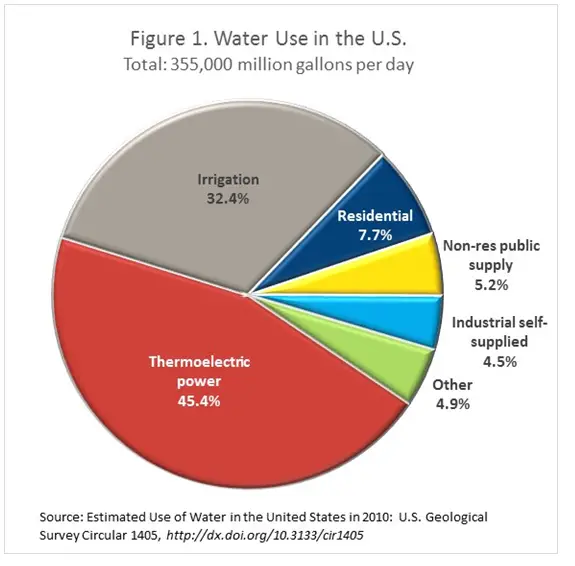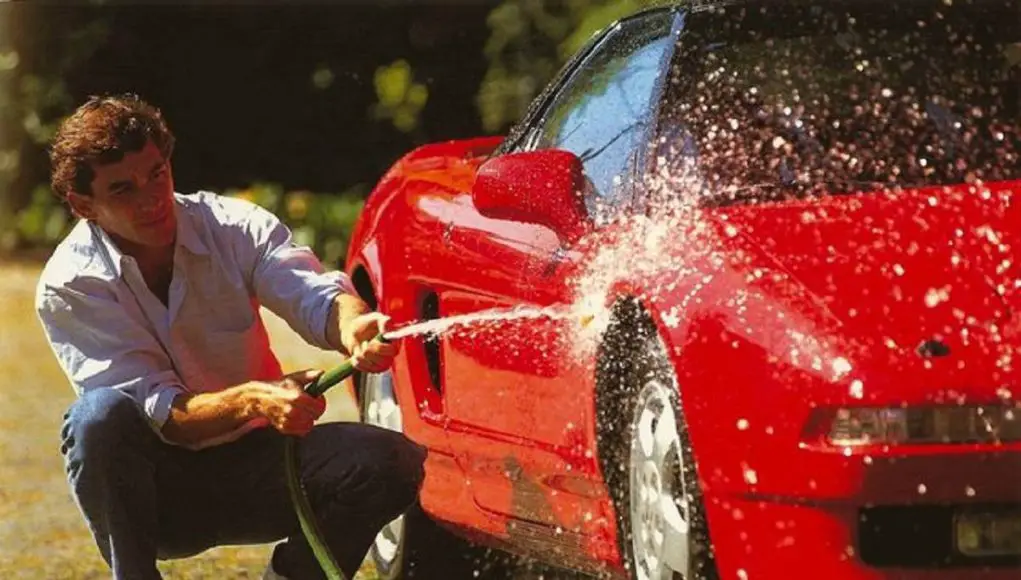Here’s why you shouldn’t deprive yourself of the joy of a clean car but, you do need to be smart about it.
If you live anywhere in the Southwest United States, you’ve heard how, over the past two decades, your area is experiencing historical levels of drought.
Embed from Getty ImagesTo not make the drought situation any worse, you probably also hear about how possible water restrictions, like reducing how long and how many days a week you can water your lawn, are headed your way.
With all that in mind, as car enthusiasts, should we stop washing our cars to do our part to save water?
Here’s why, although I believe we shouldn’t stop, we should audit how we wash our cars, evaluate how much water we use, and adjust accordingly.
First, some background information how the United States uses water.
According to the U.S. Geological Survey, residential water use accounts for less than 8% of all the water used in a single day, with the majority going to produce power and grow our food.

Even in those drought-stricken states like in California, the trend is largely the same, urban water use accounts for a fraction of what the total state uses.
And, if you drill down by home use, the majority of urban water use goes to your toilet, shower, and laundry.
This is important to keep in mind the next time you start pulling out your hair, agonizing over if you should or shouldn’t wash your car.
If we’re going to make any meaningful changes to total water use, focusing on a negligible slice that accounts for less than 8% of the total water pie is frankly pennywise and pound foolish.
How we should go about washing our cars
First, responsible car washers should incorporate a modified car washing routine into a larger home water saving strategy.
Not only can using less water result in a cheaper bill, it’s just part of not being a total piece of “you know what.”
Generally, that means taking stock of how you use water and adjusting accordingly.
A good place to start is evaluating your water bill or going one stop further with these water usage apps that work in conjunction with your local water municipality.
These apps can inform you if you have a leak and can identify when you use the most water (who or what is causing water usage spikes.)
For how you wash your cars my philosophy, one that you might consider incorporating, is to take a few minutes to think about how you wash your car, how often, and, keeping any local rules in mind, evaluate how you can be more water efficient.
That’s it.
If you’re pre-rinsing your car way too long, stop.
If you use free-flowing water to dry your car via sheeting, stop.
If you end up with half a bucket of left over soap when you’re done, it’s time to only fill your soap bucket halfway next time.
I don’t believe you should buy a bunch of waterless washing products or spend over a hundred dollars on a newfangled pressure washer if your only goal is to use less water.
The manufacture of waterless wash products and pressure washing machinery is in and of itself water intensive and, in my opinion, counterproductive to saving water.
Here’s how I go about it.
I wash when it’s not too hot or in direct sunlight, so water doesn’t evaporate.
Before I start actually spraying water, I make sure that I have everything at hand, including my bucket of soap, wash mitt, and drying towels.
And, when I do start washing, I spray from top-to-bottom, arguably the most efficient way to spray.
I’m not spraying all willy-nilly and I’m only spraying when I’m actively pre-rinsing, rinsing, or washing soap off.
For the car enthusiasts among us who need to have a clean car, I think one car wash a week is OK and more than enough. Over that and it’s bordering on needless washing.
You should definitely take stock of your equipment and should, for example, repair the leaking garden hose you use and use a multi-spray pattern nozzle if you’re stuck in the stone ages, using the ol’ thumb over an open hose technique.
Finally, If you normally wash your car at home and don’t mind washing at a dedicated car wash business, consider incorporating a visit to one of those Washo-Matic places into your routine.
Most car wash places capture, filter, and recycle water and, on average, use less than 3 gallons per car, far less water usage than you can achieve with a hose.
Conclusion
A drought doesn’t mean you have to stop washing your car.
I do think we should recognize a washed car is more of a want, not a necessity, and we should use the least amount of water possible doing it.
If you work in construction and absolutely need to blast the crude off your F-150 every day, please, don’t stop.
But, if you are a car enthusiast with a cushy office job and only use your car for commuting, you can definitely start saving a few gallons of water a week on your routine car wash.




